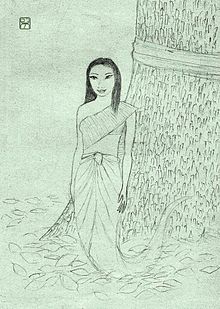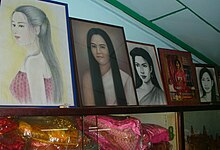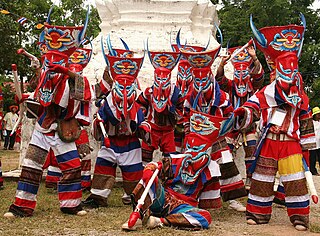
Phi Ta Khon is a festival held in Dan Sai, Loei province, Isan, Thailand. The events take place over three days sometime between March and July, the dates being selected annually by the town’s mediums.

Nang Nak is a 1999 Thai supernatural horror film based on the Thai legend of Mae Nak Phra Khanong. It was directed by Nonzee Nimibutr and released in 1999 by Buddy Film and Video Production Co. in Thailand. It depicts the life of a devoted ghost wife and her unsuspecting husband.

Mae Nak Phra Khanong, or simply Mae Nak or Nang Nak, is a well-known Thai ghost. According to local folklore the story is based on events that took place during the reign of King Rama IV.
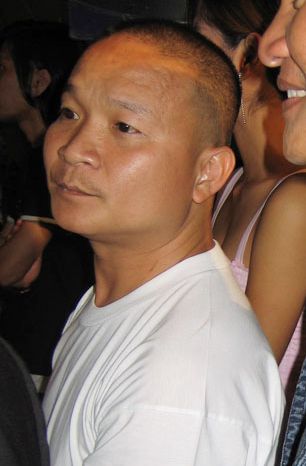
Petchtai Wongkamlao,, is a Thai comedian, actor and film director. He is best known in Thailand by his stage name, Mum Jokmok ; and is a popular Thai television personality. He is variously credited as Mom Jok Mok, Mum Jokemok or Mom Jokmok.

The Krasue is a nocturnal female spirit of Southeast Asian folklore. It manifests as the floating, disembodied head of a woman, usually young and beautiful, with her internal organs still attached and trailing down from the neck.
Sueangsuda Lawanprasert nicknamed Namfon is a Thai actress and beauty pageant titleholder who won Miss Thailand 1997 and later represented her country Miss Universe 1997.

Phraya Anuman Rajadhon, was one of modern Thailand's most remarkable scholars. He was a self-trained linguist, anthropologist and ethnographer who became an authority on the culture of Thailand. His name was Yong Sathirakoses ; Phraya Anuman Rajadhon was his noble title. He also took his family name, Sathirakoses, as a pen name by which he is well known.
Pop is a cannibalistic spirit of Thai folklore. It manifests itself as a creature that likes to devour human viscera. Pop is related to the Phi Fa spirit.

Nang Ta-khian is a female spirit of the folklore of Thailand. It manifests itself as a woman that haunts Hopea odorata trees. These are very large trees known as Ta-khian (ตะเคียน) in Thai, hence her name.
Krahang is a male spirit of the Thai folklore. It manifests itself as a shirtless man, wearing a traditional loincloth, who flies in the night.
Phi Tai Hong is a ghost of Thai folklore. It is the vengeful and restless spirit of a person who suddenly suffered a violent or cruel death.

Nang Tani is a female spirit of the Thai folklore. According to folk tradition, this ghost appears as a young woman that haunts wild banana trees, known as in Thai language as Kluai Tani (กล้วยตานี).
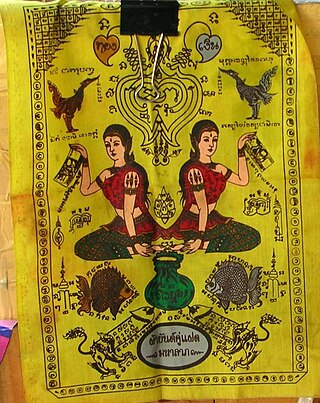
Thai folklore is a diverse set of mythology and traditional beliefs held by the Thai people. Most Thai folklore has a regional background for it originated in rural Thailand. With the passing of time, and through the influence of the media, large parts of Thai folklore have become interwoven with the wider popular Thai culture.
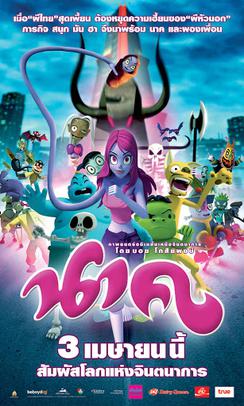
Nak is a Thai animated dark fantasy horror film that was released on April 3, 2008 and aired on TV in Thai PBS Kids.
Mangpor Cholthicha is a famous Thai Luk thung singer and actress.
Monsit Khamsoi is a Thai singer.

Khlong Chak Phra is one of the six khwaengs (sub-districts) of Taling Chan District in Bangkok's Thonburi side. It is the location of the district office.

Kannarun Wongkajornklai is a Thai actress who signed a contract as an actor under Broadcast Thai Television from 2010 to 2021, currently turning into a freelance actor. Famous for playing Mae Ying Chan Wad in the historical period drama Love Destiny.
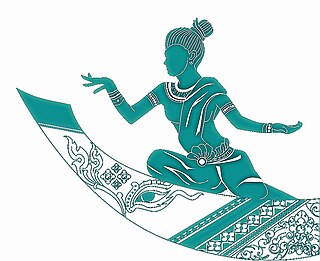
Mae Yanang is a ghost guarding boats and various vehicles in Thai, Cambodian, and Laotian cultures. They wear traditional clothes of each respective culture. The tradition of worshipping Mae Yanang comes from the worshipping of female deities such as Mae Phosop and Nang Kwak, which may be derived from the worship of Mazu in Chinese folk religion.

